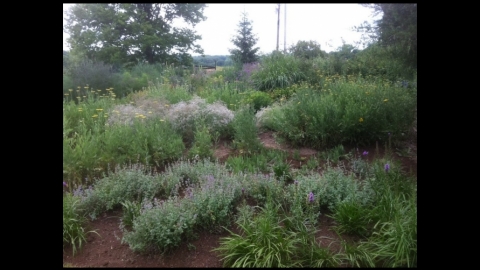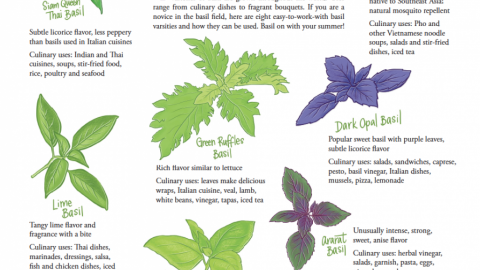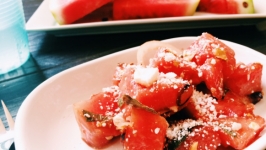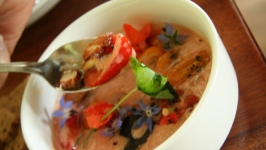Don't Say Goodbye to The Herbs of Summer
Ah, summer. As you look back at all the ways you used the fresh herbs you either grew or scored at the farmers’ market, you may suddenly be overcome with loss, knowing their days are numbered. As soon as the first hard frost comes, most of your fresh herb options will become an aromatic memory until they return next spring.
Luckily, it’s easy to harvest much of this year’s herb bounty and preserve the smell and flavor so that mid-winter, when it’s cold and grey and all you want is some sensation of summer, you can relive a moment in the sun.
There are 60 or more varieties of basil in the world, and only one good way to keep it for winter use. Fragile leaves don’t hold up to drying or freezing in oils. For basil and other fragile herbs you love, here is the best hope for a ray of sunshine in February.
Flat Frozen Herbs:
First, blanch your herbs. Blanching kills things that mold or degrade leaves and helps keep that bright green color when you pull the frozen delights out for cooking weeks, and even months, later. Here’s how:
Dip stems of basil in boiling water until just wilted—no more!
Go immediately from the boiling water to an ice bath to stop the heating.
After blanching, pat leaves dry and cut them from the stems.
Lay in a single layer inside a sealable freezer bag and place in freezer. When winter blues hit, pop open bag, break off a chunk, add to food and feel the warm summer love in your heart.
Have visions of herbs hanging in your kitchen like a farm in Provence? Do it! Herbs like mint, rosemary, tarragon and thyme do well as dried bundles and will last six to 12 months in a cool, dark area.
Dried Herbs:
Simply tie bundles at the stems and hang them in a dry place with good ventilation (not the kitchen).
It takes only hours to a few days to dry herbs. When dry, simply pack the herbs loosely in a storage bag and store them in that cool, dry spot … you know, the one in your rustic Provence kitchen.
What about those heartier herbs, the kind that are perfect for winter stews, sautés and roasting? Sturdy plants like parsley, sage, rosemary and thyme (someone should write a song!) are great for mixing with, and infusing into, olive oil and then freezing into cubes. Plunk a cube into your recipe and you’re good to go. (Playing Simon and Garfunkel while cooking is optional.)
Herbs Frozen in Olive Oil:
Stem herbs and use whole leaves or chop them into pieces.
Place herbs into cube trays … don’t fill more than ¾ of each cube with herbs; ⅔ full is a nice amount.
Pour olive oil into each cube until you see the herb/oil ratio you want to achieve.
Place the cube tray into the freezer until your nuggets of herbaceous goodness are completely frozen (probably overnight).
Frozen cubes should be popped out of the tray and stored in a sealable freezer bag for future use.
Note: Frozen cubes of olive oil melt pretty quickly at room temperature, so don’t put one or two on the counter then become distracted and walk away when you see Mario Batali on TV.
Mary McClung is an Indianapolis photographer and visual artist finishing her BFA in Photography and Intermedia at Herron School of Art & Design. Mary’s love for the slow, sustainable, farm-to-table culture manifests itself through her work photographing and promoting the food and the food community around Central Indiana.











